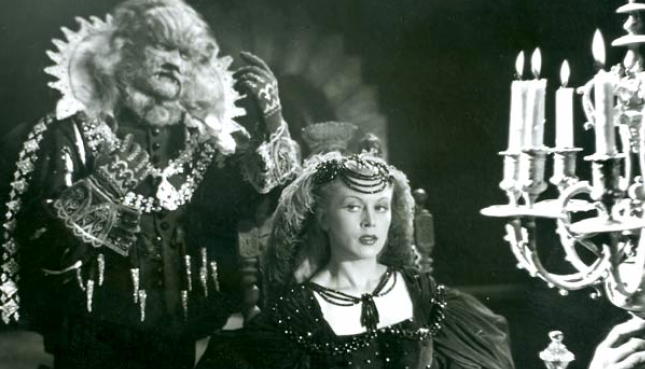“Don’t Dream it, Be it.”
Newlyweds Brad and Janet travel to “go see the man who begannit,” doctor Scott. On their way they get a flat tire and the only place to stop to get to a phone is a gothic castle with motorcycles out front. They meet the residents, Riff Raff, Magenta, and Columbia first and are instantly uncomfortable by their sexual deviance. They happen to have arrived on a very special occasion. Their master, Frank n’ Furter, is throwing a party for a monster he has created (who is really an tanned, Aryan Frankenstein in a gold speedo) as a lover for himself. We find that all the residents are aliens from the planet Transylvania. Eddie, a lover of Columbia, is brutally murdered by Frank. Everyone sits to have dinner and they find that the dinner table they have been eating off of was really a coffin with Eddie’s remains inside. This causes a ruckus and Frank turns everyone into Greek statues. He dresses the statues, and arranges them on stage. Then begins the floorshow. Riff Raff and Magenta interrupt the show because they want to return home and Frank wants to stay. The two kill Frank and the castle begins to fly home. Brad and Janet are left changed and befuddled.
How does one begin describe the indescribable Rocky Horror Picture Show? Like many cult films, this film is based less on plot and technical skill, more on performance and clever dialogue. Writer/ actor (Riff Raff), Richard O’Brien wrote the Broadway show The Rocky Horror Show. It was very successful in the Britain and Hollywood producers were keen on the idea of creating an American film version. The film was made, but not at the initial request of the producers. The producers wanted a film with American stars, but director Jim Sharman wanted the original Broadway cast. The producers agreed, but with a drastically lower budget of 1.2 million. The film had a terrible opening and theatrical run until it was discovered as the perfect midnight movie.
A midnight movie is a phenomenon that screens offbeat cinema at midnight. Films like The Rocky Horror Picture Show and Freaks are prime examples. The term Midnight Movie is often used as a synonym for B-movie, and Cult Film. Though these terms are all extremely similar in concept they vary and intermingle.
Rocky Horror is really the cult film to end all cult films. It is the ultimate, quintessential, and undisputed cult film. The film is also a cult film about cult films in a sense. It references numerous sci-fi and b-movies like Tarzan the Ape Man, The Cabinet Of Doctor Caligari, Doctor X, King Kong, Frankenstein, Bride of Frankenstein, The Invisible Man, Flash Gordon, The Day the Earth Stood Still, It Came from Outer Space, Tarantula, Forbidden Planet and countless more. The Rocky Horror Picture Show incorporates many of the themes that define a cult film. It’s a Sci-Fi, Horror, Parody, and Black Comedy, bisexual, glam rock spectacular.
The show is really stolen and the plot carried by the legendary Frank played by Tim Curry. In his film debut he gives the performance of a lifetime. Frank’s mood swings and emotional tumult ebbs and flows like the plot of this film. His character goes from camp queen to crumbling diva like that of an old Hollywood star. He plays the alien, mad scientist, cult leader and lovesick transvestite that is so easy to love. His ripped tights, corset, and garter belt are only additions to the beautiful and theatrical performance of Tim Curry’s life. His character has become and icon for any person trying to show edge of rebellion in their style. Frank is truly the Jesus Of the Freaks.
It is impossible to discuss The Rocky Horror Picture Show without mentioning half of its entire appeal and that is live performance. This film has gathered a following that does not watch in silence, but rather dress up and act out the film. They gather at midnight in a theater armed with toast, water guns, newspaper, lighters, rubber gloves, noisemakers, toilet paper, confetti, party hats and a bell. All objects have a significant meaning in the participation of the story. For example, when Frank snaps his rubber gloves on, the audiences does the same. This communal activity has surpassed the actual film. Many people care less about the film and just go for the party.
The legacy Rocky Horror has left behind is more cult-like than any other cult film in the world. The fan base ranges from people who were alive in 1975 to kids who were introduced recently. The film has earned 139.8 million dollars since its release through midnight showing all around the world. It is the film with the longest theatrical run in history. It’s on of the highest grossing films as well by earning over one hundred times it’s budget.
Amidst the camp and insanity is a universal message that is somewhat melancholic. It hits home for many of the “freaks” that enjoy the film so much. The motto sung by Frank in his final song, “Don’t dream it, be it,” in its simplicity, sums the entire appeal to Rocky Horror. It supports the flying of our own freak flags. In some ways the film is also a point of ultimate escapism. Participants enter a theater with hundreds of other people dressed just as strange if not stranger than the next. They are all part of a whole; the island of lost toys. It’s a sense of community for the people who probably lacked such a feeling in their life.







